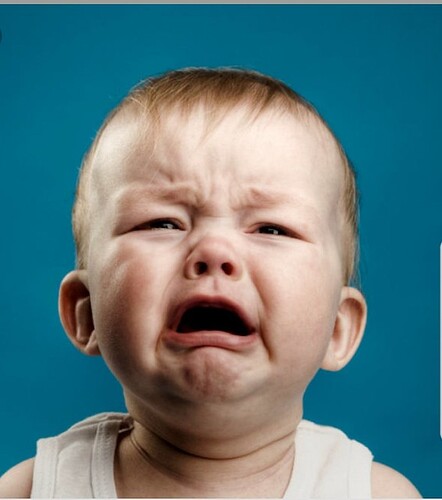And just an FYI - I am not a believer that Cab or Bordeaux varieties are what we do best in CA - so there is that too ![]()
Eventually Mourvèdre could take over but it faces significant headwinds.
I agree with your idea that is should be wineries with a long history. How about Ridge MB, Mount Eden, Mayacamas, Dominus and Chateau Montelena. With respect to Dominus, I am including in its history Inglenook Cask (Napanook). Maybe add Diamond Creek or Mondavi Reserve.
Eisele has always been a First Growth to me
Is Insignia based on estate fruit? I honestly do not know.
I am not completely on board with the current style, but it has a long track record. Shafer Hillside Select is another one that has been around a while.
Classified growth are wines with a long history, so any list should have SLWC, Heitz, Togni, Corison, Forman, Montelena, Dunn, Mondavi Reserve, BV GDL, Diamond Creek, Shafer, Joseph Phelps, and Dominus in Napa IMO.
Given that classed growths are based on sites rather than brands, I think there are good cases to be made for both Chappellet and Bryant estate vineyards to be on this list.
In assuming we are sticking to red Bordeaux variety wines here and so I don’t need to start talking about Hyde vineyard for its Chardonnay?
Here’s my list. I didn’t go beyond second growth though.
“First growth”
- Heitz Martha’s
- Screaming Eagle
- Shafer Hillside Select
- Lokoya Mt. Veeder
- Harlan
- Dominus
- Kapcsandy
- Ridge Monte Bello
- Diamond Creek
- Opus One
“Second growth”
- Dunn Howell Mountain
- Mondavi Reserve
- Dalla Valle Maya
- Montelena Estate
- Spottswood Estate
- Colgin
- Joseph Phelps
- Stag’s Leap
- Beaulieu Vineyards
- Mayacama
Classified Growth implies vineyard site.
Any list full of brands is simply a list of faves.
Right. Which is why I posed my question about Insignia. If it’s estate fruit it belongs on the list. If not, no.
The grapes for Joseph Phelps Insignia wine come from a blend of several estate vineyards within Napa Valley, including prominent sources like the “Home Ranch” in St. Helena, “Banca Dorada” in Rutherford, “Las Rocas” in Stags Leap District, “Yountville” in Oak Knoll District, and “Suscol” in South Napa Valley, with the exact blend varying slightly each vintage depending on the quality of the grapes harvested from each site.
I’m just the second mention of Mount Eden; considering quality, blind tasting results and history can only be in the top rank.
If you’re judging by price, the words ‘Napa Valley’ on the label confer a huge premium, imo not always merited. Ridge Monte Bello has won numerous blind tastings against the world’s best Cabernet based wines and still sells for far less than a host of Napa Valley producers with nothing like the track record.
Scott,
In Burgundy, classifications are based on vineyard sites, as you state. But, in Bordeaux, classifications are mostly based on winery. As I understand it, for example, Chateau Palmer has a lot of different vineyards from when the classification system was set up.
Dan,
Given that you (and John Gilman) are the reasons I got interested in learning about Mount Eden (and I thank you both very much), you are kind of the first and second mention of Mount Eden.
Maybe the best “Napa Valley” wines come from the Santa Cruz Mountains.
Just Bordeaux varieties, or perhaps separate lists for the “major” grapes?
Hyde is certainly a “grand cru” site for Chardonnay, but has zero relevance for Cabernet.
For Bordeaux variety based wines they must be from estate fruit to correspond with the ownership of the land model in Bordeaux. Makes sense, though that does leave out some major wines. That’s OK though, as grape contracts can change, and thus alter or eliminate a bottling. That puts Insignia in the rankings and leaves the Corison Napa (blend including purchased fruit) out. Corison Kronos is as good a wine as can be found in California, so I would have that in my list.
This is the point. As far as I know, Bordeaux is basically monopoles - the area of the vineyard is controlled by the winery. Also, the Left Bank wineries produce large amounts of wine every year which allow easy access. I would guess that most members of this board who consider themselves lovers of Bordeaux have probably drank all or almost all of the wines in the 1855 classification at some point. That stands in stark contrast to the availability of some of the wines being discussed like Screaming Eagle (the Le Pin of Napa.) Napa also shares some of the characteristics of Burgundy where there really seem to be some great vineyards like Dr. Crane or To-Kalon. This brings into play the asset light producer like Schrader or Realm (of course Realm now owns a vineyard as well as a winery) who have made great reputations as producers in the absence of actually owning a vineyard.
I just think the landscape and production models are so varied it becomes a futile exercise to try and emulate the 1855 classification. Perhaps you could have a list of Producers, a list of monopole producers, a list of best vineyards, a list of greatest winemakers, etc…
I would add Heitz Bella Oaks. Maybe second tier to Martha’s.
Freemark Abbey Bosche.
Silver Oak Napa or AV?
One that I have not had in some time was Viader. A true estate bottling with an impeccable track record that has stood the test of time.
The whole existence of BOND attempts to identify the Grand Crus of Napa.
